4 Causes of Coolant in Oil (and What To Do)
Oil and coolant mixing in a vehicle engine creates a milky, off-colored sludge that is difficult to remove. This fluid contamination indicates a mechanical failure allowing the liquids to intermingle.
Identifying the root cause is key to fixing the issue and saving your engine from catastrophic damage. Here are the most common causes of coolant getting into oil, what to do, and how much it’s going to cost to fix.
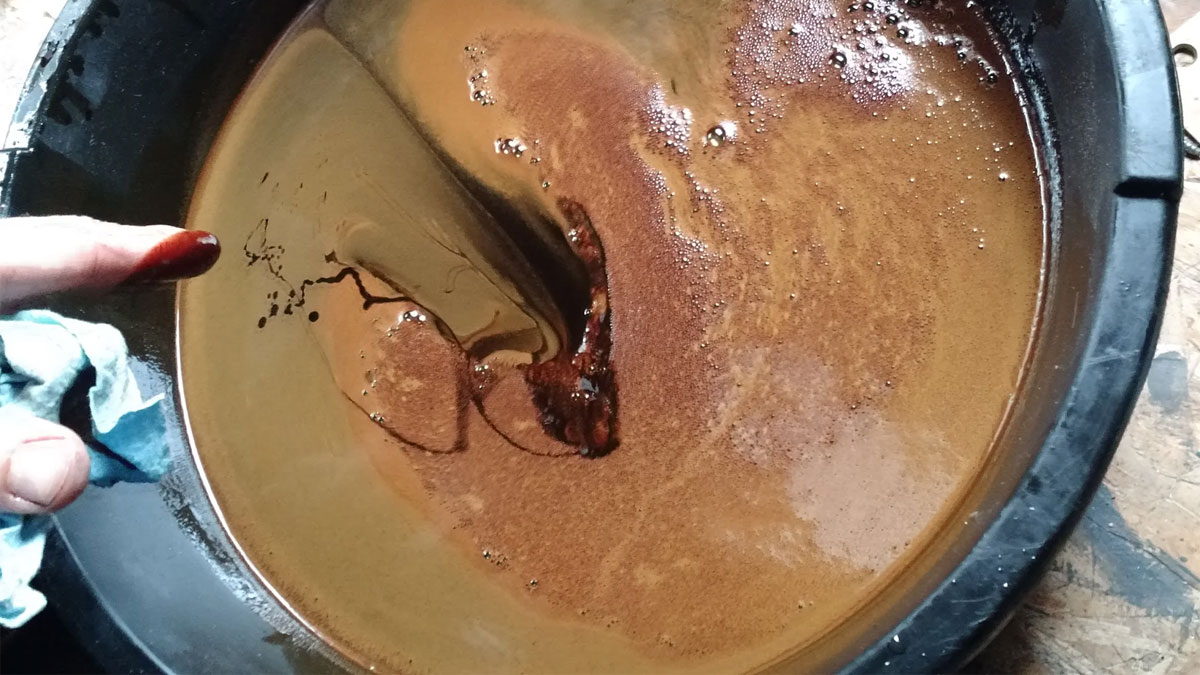
What Does Coolant in Oil Look Like?
As most are well aware, oil and water, or in this case, coolant, do not mix. In fact, even when in constant contact with one another, these two fluids refuse to blend.
If combined in large enough quantities, oil and coolant produce a rather thick sludge that tends to be light brown or gray in color. Many liken this sludge consistency to that of a milkshake.

Even in lesser quantities, coolant contamination can prove somewhat obvious in engine oil. This condition is often noted for leaving a brown-colored stain on an engine’s dipstick, which is typically positioned at a slightly higher level than that of the engine’s oil itself.
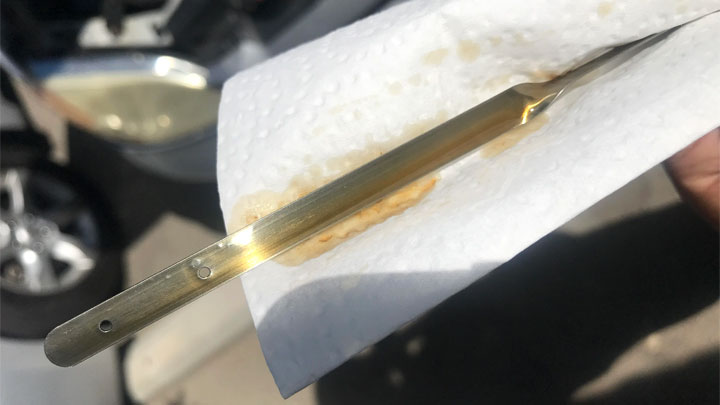
Possible Causes of Coolant in Oil
There are several different ways in which coolant can find its way into an engine’s lubricating oil, each of which requires a thorough diagnosis to isolate. By understanding these potential causes, you can expedite the process of diagnosing the issue at hand.
The following are several of the most common causes behind coolant contaminated engine oil.
#1 – Leaking Head Gasket
A head gasket is used to prevent the mixing of coolant and oil at the point at which an engine’s block and cylinder head(s) join. When compromised, this gasket no longer prevents this mixing of fluids, thereby creating a path for coolant to enter an engine’s lubricating oil.
Related: Losing Coolant But Can’t See a Leak? (Here’s What It Means)
#2 – Cracked Engine Block/Cylinder Head
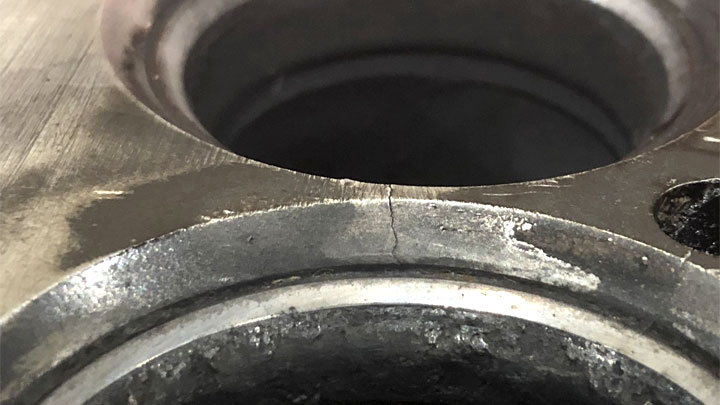
Much like a leaking head gasket, a cracked engine block or cylinder head no longer possesses the ability to keep lubricating oil and coolant separated. This, in turn, creates the possibility of cross-contamination.
Failures of this type most often occur as the result of overheating.
#3 – Compromised Oil Cooler
Some engines utilize a specialty heat exchanger known as an oil cooler. Oil and coolant are both allowed to flow through this cooler, though in separate passages.
However, when an oil cooler fails internally, these fluids are often allowed to come into contact with one another.
#4 – Accidentally Poured Coolant Into Oil Fill
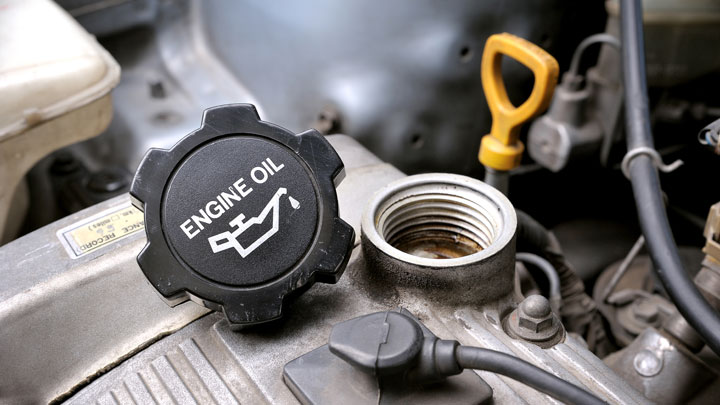
While some might scoff at such a notion, coolant does accidentally get poured into engines far more common than one might be inclined to believe. Nonetheless, if caught immediately, this is a rather simple issue to resolve.
See Also: What Can Happen When You Overfill Coolant
What To Do
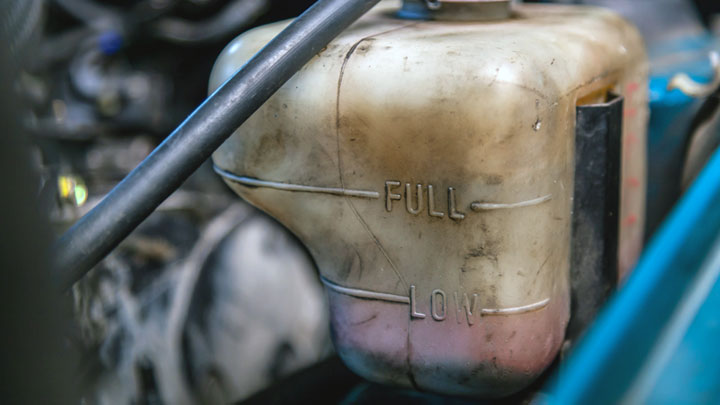
If you have any reason to suspect that your engine’s lubricating oil has become contaminated with coolant, you should first check the engine’s coolant level, as it sets within the vehicle’s coolant overflow reservoir or surge tank.
If this receptacle appears reasonably low, further diagnosis will be required. At this point, a cooling system pressure test is highly advised, as it will allow one to confirm the point of such leakage.
It is also important to mention that a vehicle should not be knowingly driven with coolant-contaminated oil. If a vehicle must be driven to a repair shop further than a few miles away, all oil should first be drained into a drain pan, before refilling the engine itself with fresh oil.
While this is not a permanent repair, it will prevent the breakdown of bearings and other critical components in the short term.
Cost to Fix
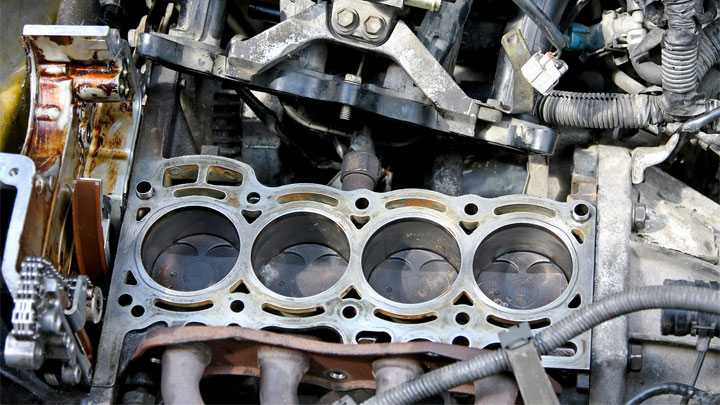
The exact cost required to repair an engine that is allowing coolant to enter its supply of engine oil tends to differ on a case-by-case basis. This cost is dependent not only upon the make and model of the vehicle in question but the exact source of the failure itself.
Generally speaking, one can expect to pay approximately $1,500-$2,000 to have their engine’s head gasket replaced, while the replacement of a cracked cylinder head itself can easily exceed $2,000 in total.
However, if the source of your oil’s coolant contamination ends up being a cracked engine block, total engine replacement will most often be required. This can end up costing as much as $5,000 (or more).
On the lower end of this price spectrum, is the replacement of a faulty oil cooler. Typically, one can expect to pay roughly $500-$700 for such repairs, the bulk of which will be directed toward the purchase of parts. Luckily, labor costs for such repairs tend to be relatively low.
Read Also: Average Coolant Flush Cost
Can You Drive a Car That Has Coolant In the Engine Oil?
Driving a vehicle with coolant in the oil is never a good idea. Coolant is far thinner in consistency than engine oil, meaning that as oil becomes contaminated with coolant/antifreeze, its viscosity will be reduced. In turn, contaminated engine oil proves incapable of providing the same degree of protection to vital engine components, as it otherwise would.
Furthermore, coolant contaminated oil is also known to take on a sludge-like consistency. This sludge can block key oil passages, causing oil starvation in the process. If this were to occur, severe engine damage would likely result, thereby necessitating costly repairs and creating additional downtime.
In any event, the root cause of a vehicle’s oil contamination should always be diagnosed and repaired as soon as possible. Doing so will quite possibly save a world of excess hardship and heartache down the road.
Unless you have a good amount of experience under your belt, repairs of this type are in most cases best left handled by a professional mechanic. Scheduling an appointment with an independent mechanic or local dealership should be done right away.
What Can Happen if Coolant Gets in Your Oil?
Any form of oil contamination requires immediate attention. This situation becomes even more dire whenever the contaminant in question proves capable of thinning out the oil into which it has leaked. This is the exact scenario that is presented, whenever coolant enters an engine’s engine oil. As oil is diluted, its viscosity is effectively lowered.
As a result of this loss in viscosity, engine oil proves incapable of lubricating and protecting an engine’s vital components in the same fashion that it once did. This, in turn, can lead to critical bearing fatigue and failure, severe lifter damage, and undo valvetrain stress. All of these issues are not easily or cheaply remedied.
Coolant in Oil vs Oil in Coolant
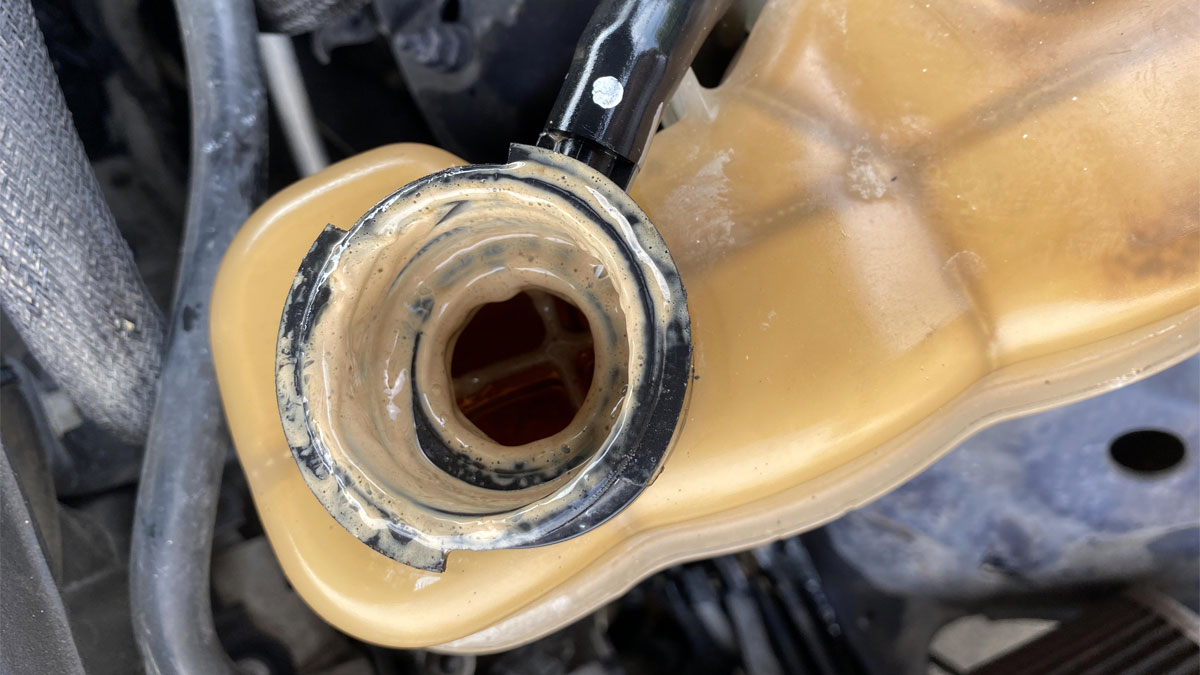
Coolant and oil can contaminate one another in two distinct ways. Oil can find its way into an otherwise closed cooling system, or alternatively, coolant can enter an engine’s lubricating oil. While neither condition is ideal, each poses its own unique set of issues, which must be dealt with swiftly to avoid additional engine damage.
When oil enters an engine’s cooling system, sludge begins to form, often reducing the flow of coolant throughout the system itself. This, in turn, can cause rapid overheating, as well as possible deterioration of vital seals and gaskets.
On the other hand, coolant contaminated oil quickly loses much of its value as a critical lubricant, due to a loss in overall viscosity. This loss in viscosity can quickly lead to bearing, lifter, and valvetrain damage, all of which tend to be quite costly and labor intensive to repair.
- P0480 Code (Symptoms, Causes, and How to Fix) - Apr 19, 2024
- Car Temperature Gauge Stopped Working? (Here’s Why) - Apr 15, 2024
- Ignition Coil vs Coil Pack (What’s the Difference?) - Apr 8, 2024

I have a 2020 Ram 1500 Big Horn 5.7. At 115,000 mi I Had the heater core replaced due to heat not working. A month later at 118,000 miles I had a coolant leak from near the firewall which, I think is by the heater coil. It was shooting coolant directly on the injector. I checked the radiator to see if it had coolant and found brown sludge. I took to dealer and they said I either need a radiator and oil cooler or maybe an engine. They said when they replaced the heater coil there wasn’t any evidence of oil in the coolant. Then they said oil was leaking in the coolant before they replaced heater core but it hadn’t showed up yet?? My question is, is there anything that could have caused the oil in coolant due to them replacing heater coil? In all this the truck never ran hot and performed as it should.
I’m not sure, but I can’t think of a reason why you would get oil in the cooling system from replacing a heater core. I suppose it’s possible there was some contamination while the lines were open.
Brown sludge could mean corrosion from old coolant, not necessarily oil. Someone may have added some sort of stop leak which could give you some weird buildup as well. Did they have the coolant tested, or were they just eyeballing it?